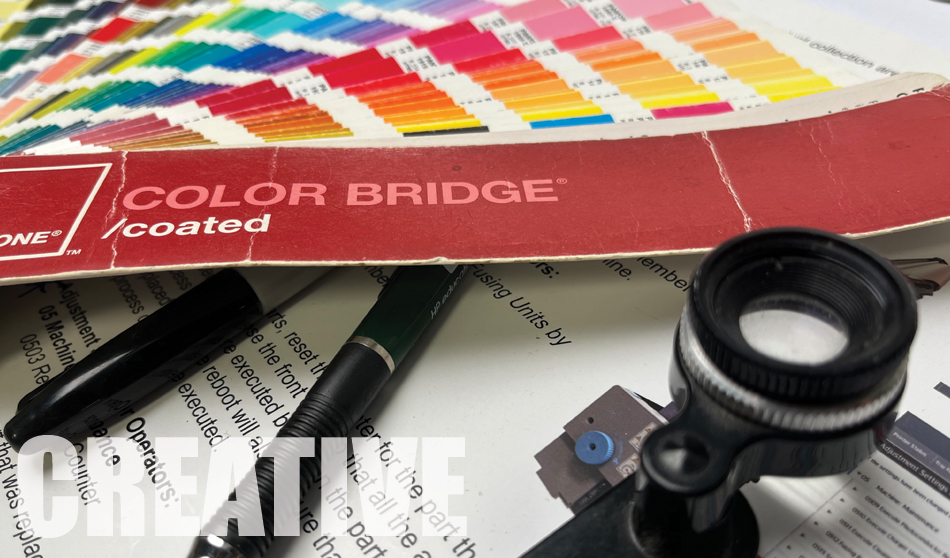
When you think of commercial printing, you might picture massive presses humming away, vibrant colors spilling across paper, and stacks of finished materials ready for delivery. But before any of that magic happens, there is a critical phase that determines whether your print project will be flawless or frustrating — the prepress process. The part of the production process that happens before printing.
Prepress is the behind-the-scenes work that transforms your digital files into print-ready formats. It’s where technical expertise, meticulous attention to detail, and creative problem-solving all come together to ensure that what you envisioned is exactly what appears on the page. Without proper prepress preparation, even the best-designed project can run into costly delays or disappointing results.
Let’s take a look at how prepress works — and why it’s the unsung hero of every successful print job.
Step 1: File Preparation — Laying the Foundation
Your design file is the blueprint for your printed piece, and just like building a house, the blueprint must be precise. Prepress specialists review every element of your file to ensure it is set up correctly for the intended print process. This includes:
- Resolution checks: Images must be high enough quality (usually 300 dpi for print) to prevent pixelation.
- Color settings: Converting colors to CMYK or spot colors to ensure accuracy on press.
- Bleeds and margins: Verifies that backgrounds and images extend beyond trim edges to prevent white borders and ensuring safe zones for important text.
- Font management: Verifies that the fonts are embedded or outlined in your file, so they display correctly, no matter the system.
A file might look perfect on your computer screen, but printing has unique rules. Prepress ensures those rules are followed from the start.
Step 2: Proofing — The Last Line of Defense
Proofing is where you get to “test drive” your project before the presses roll. It’s your chance to verify that colors, layout, and text are exactly as intended.
- Digital proofs show you how the file will print, allowing for quick reviews and changes.
- Hard copy proofs (color-calibrated at Tru Art) let you see a replica of your print project to confirm color accuracy and content.
The proofing stage is crucial for catching issues like typos, misaligned graphics, or unexpected color shifts. Every adjustment made here is one less problem to fix later — and one more step toward a flawless final product.
Step 3: Prepress Adjustments — Bridging Design and Production
Sometimes, even with careful file prep, adjustments are needed to ensure the best possible outcome. Prepress teams might:
- Adjust image contrast for better print clarity.
- Optimize color separations for consistent tones.
- Correct minor layout issues that could cause problems during trimming or folding.
- Ensure compliance with printer-specific technical requirements.
This is where prepress specialists act as translators, converting your creative vision into technical instructions the press can execute.
Step 4: Why Prepress Matters for Businesses
If you are running a marketing campaign, launching a new product, or hosting a big event, you cannot afford to have your print materials delayed or off-brand. Prepress safeguards your schedule, budget, and brand reputation by:
- Reducing costly reprints caused by file errors.
- Ensuring brand colors remain consistent across multiple projects.
- Preventing production delays due to missing or incompatible file elements
- Delivering a final product that matches your vision.
Think of it as insurance for your print investment — and peace of mind for your marketing team.
The Tru Art Difference in Prepress
At Tru Art, our prepress department combines decades of experience with the latest technology to make sure your print project runs smoothly from start to finish. We collaborate closely and guide you through proofing and make expert adjustments to ensure optimal quality.
Whether you are producing brochures, catalogs, packaging, or promotional materials, our prepress team is committed to accuracy, efficiency, and protecting your brand’s image.
Conclusion
In printing, success doesn’t start on the press — it starts in prepress. Every color match, every clean edge, and every perfect fold begins with careful preparation and proofing. By investing in a strong prepress process, you are setting your print job up for success before the first sheet is ever printed. Ready to see how our prepress expertise can elevate your next project? Contact Tru Art Color Graphics today to discuss your upcoming print needs — and let us set the stage for flawless results. Better yet, come see for yourself with a personalized tour of our facility and see firsthand the process that brings your vision to life.

